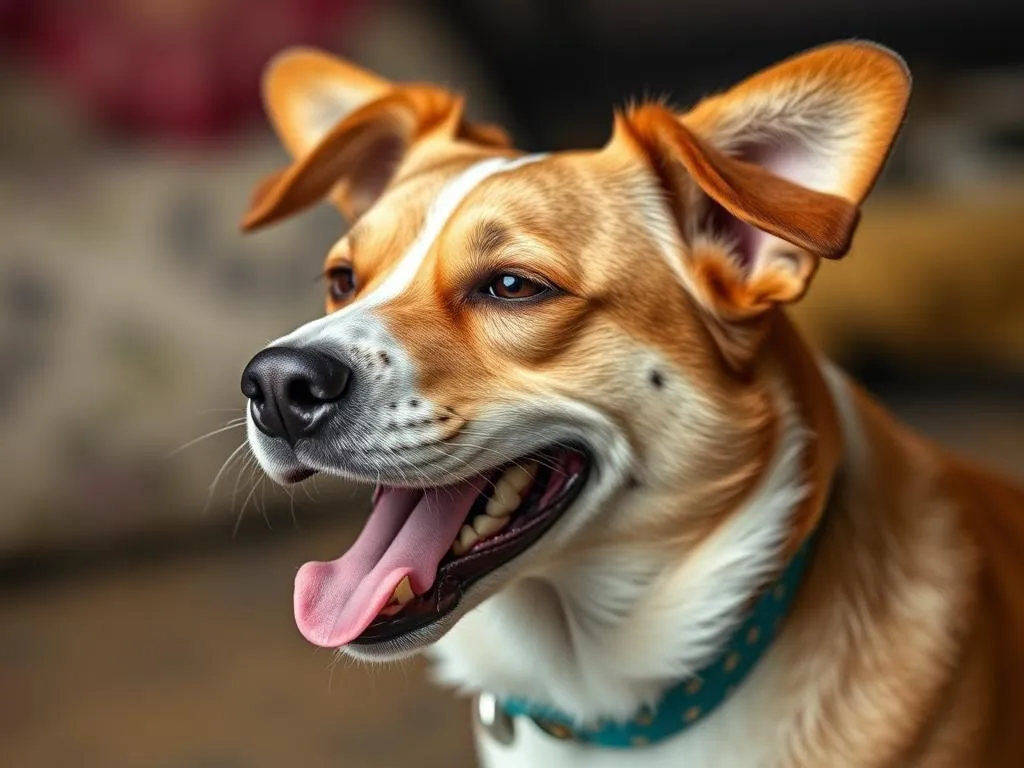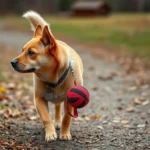
Introduction
Have you ever wondered how to make a dog laugh? While dogs may not chuckle like humans do, they certainly have their unique ways of expressing joy and playfulness. Canine humor is a fascinating concept that not only strengthens the bond between dogs and their owners but also enhances a dog’s mental and emotional well-being. Laughter and play are essential components of a healthy dog’s life, allowing them to release pent-up energy and experience joy.
In this article, we will explore practical tips and techniques for making your dog laugh. By understanding dog behavior, engaging in playful activities, and incorporating humor into your interactions, you can create a joyful environment for your furry friend. Let’s dive into the delightful world of canine laughter!
Understanding Dog Behavior
The Nature of Dog Laughter
When we think of laughter, we often envision the hearty chuckles of our friends or family. However, dogs have their own version of laughter, which sounds like a series of rapid panting or a distinctive “huffing” sound. This playful vocalization is often accompanied by wagging tails, playful body language, and a joyful demeanor.
The science behind why dogs express joy and playfulness is rooted in their evolutionary history. Dogs are social animals, and play is a crucial part of their social development. Engaging in playful behaviors helps dogs learn social cues, establish hierarchies, and develop communication skills. Understanding these behaviors is key to making a dog laugh.
Signs of a Happy Dog
Recognizing when your dog is happy and engaged is essential for creating fun interactions. Here are some common body language indicators that show your dog is in a joyful mood:
- Wagging Tail: A wagging tail, especially when held high, usually indicates excitement and happiness.
- Play Bow: This is when your dog lowers their front legs while keeping their rear end raised, signaling a desire to play.
- Relaxed Ears and Body: A dog that is relaxed and comfortable will have ears in a neutral position, a relaxed body posture, and may even roll over to expose their belly.
In addition to body language, dogs express joy through vocalizations. Barks, yips, and playful growls are all signs that your dog is enjoying themselves.
Activities to Make Your Dog Laugh
Playful Interactions
One of the best ways to make a dog laugh is through playful interactions. Engaging in games like tug-of-war or fetch not only provides physical exercise but also stimulates your dog’s mind. Here’s how to add a touch of humor to these activities:
- Tug-of-War: Use a favorite toy and engage in a playful tugging match. Make silly sounds or funny faces while tugging to keep your dog entertained.
- Fetch: While retrieving a ball or toy, add an element of surprise by pretending to throw it in one direction and then tossing it in another. Your dog’s reaction to the unexpected movement can be quite humorous.
Funny Tricks and Commands
Teaching your dog funny tricks can lead to delightful interactions that may even elicit laughter. Here are some tricks that dogs often find amusing:
- Spin: Teach your dog to spin in circles. Use treats to guide them and reward them for a job well done.
- Roll Over: This classic trick involves rolling onto their back. The playful motion often gets a laugh from onlookers, and your dog will enjoy the praise.
- Play Dead: Teaching your dog to “play dead” can lead to humorous moments, especially if you add a dramatic flair to the command.
These tricks not only provide entertainment but also strengthen the bond between you and your dog through shared experiences.
Engaging Toys
Interactive toys can significantly contribute to your dog’s laughter and joy. When selecting toys, look for those that stimulate your dog mentally and physically. Here are some recommendations:
- Puzzle Toys: These toys challenge your dog to solve problems, encouraging them to think and play at the same time.
- Squeaky Toys: Dogs often find squeaky toys amusing. The sound can elicit a playful response, making them more inclined to engage with the toy.
- Fetch Toys: Consider toys specifically designed for fetch, such as frisbees or balls that bounce unpredictably. These can lead to laughter-inducing moments as your dog chases and catches them.
Humor in Training
Using Positive Reinforcement
Training your dog can be a fun and rewarding experience. Utilizing positive reinforcement not only encourages good behavior but can also lead to a more playful demeanor. Here’s how to incorporate humor into training:
- Reward Funny Behaviors: If your dog does something amusing during training—like tilting their head or barking in response to a command—reward them with treats and praise.
- Use Funny Commands: Incorporate humorous commands that prompt your dog to perform silly actions, such as “dance” or “take a bow.”
Adding Humor to Training Sessions
Training sessions don’t have to be serious. Adding humor can lighten the mood and make the experience enjoyable for both you and your dog. Here are some tips:
- Lighthearted Approach: Incorporate funny voices or silly movements while giving commands. Your dog will respond to your playful energy.
- Keep It Fun: Use play breaks during training sessions to keep your dog engaged. Rewarding your dog with a quick game or a treat can make training feel less like a chore and more like a game.
Creating a Playful Environment
The Importance of Space
A safe and fun environment is crucial for enhancing your dog’s happiness. Here’s how to create an ideal playful area:
- Designated Play Area: Set up a specific space in your home or yard where your dog can play freely. Make sure it’s free from hazards and distractions.
- Outdoor Adventures: Take your dog to parks or open spaces where they can explore and play. The variety of environments can lead to amusing moments as they interact with new sights and smells.
Socialization with Other Dogs
Interaction with other dogs can lead to playful and funny moments. Socializing your dog not only provides entertainment but also enriches their life. Here are tips on how to find these opportunities:
- Dog Parks: Look for local dog parks where your furry friend can run and play with other dogs. The interactions can lead to laughter-inducing antics.
- Playgroups: Join local dog playgroups or training classes that focus on socialization. These gatherings often lead to funny moments as dogs engage with one another.
Incorporating Human Humor
Funny Sounds and Movements
Dogs are highly attuned to human emotions and behaviors. Using funny sounds, voices, or movements can captivate your dog’s attention. Here are some ideas:
- Silly Sounds: Experiment with different vocalizations, such as high-pitched voices or exaggerated growls. Your dog may respond with playful behavior.
- Funny Movements: Engage your dog by moving in silly ways, such as hopping or dancing. Their reaction can be quite entertaining!
Sharing Laughter with Your Dog
It’s important to remember that dogs pick up on their owners’ emotions. Laughing and being playful around your dog not only enhances their mood but also strengthens your bond. When you share laughter, your dog feels more connected to you, leading to a happier, more fulfilling relationship.
The Benefits of Making Your Dog Laugh
Emotional Well-being
Making your dog laugh has profound implications for their emotional well-being. Laughter can significantly reduce stress and anxiety, contributing to a more balanced and content dog. Engaging in fun activities fosters a positive environment that allows your dog to thrive.
Strengthening the Bond
Shared laughter and playful activities enhance the owner-dog relationship. The moments spent together, filled with joy and laughter, create lasting memories for both you and your furry friend. Personal anecdotes from dog owners often highlight how humor has deepened their connection with their pets, resulting in a more fulfilling companionship.
Conclusion
In conclusion, learning how to make a dog laugh is not only a delightful endeavor but also a beneficial one for both you and your furry friend. By understanding dog behavior, engaging in playful activities, and incorporating humor into your interactions, you can create a joyful environment that enhances your dog’s emotional well-being.
As you explore the various methods discussed, take note of your dog’s reactions and enjoy the laughter that ensues. Remember, the journey of making your dog laugh is as rewarding as the laughter itself. So go ahead, embrace the silliness, and make your dog’s day brighter!









